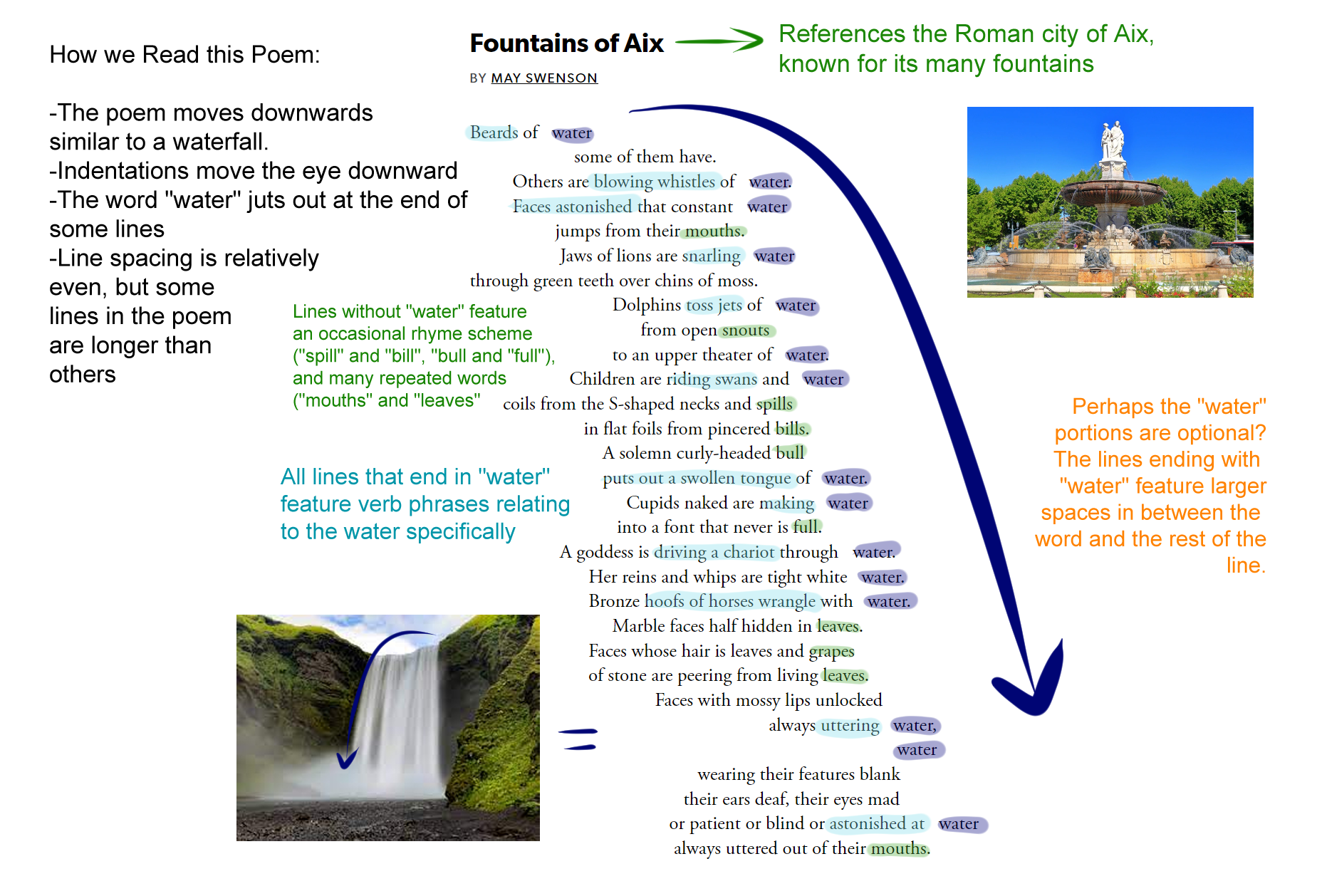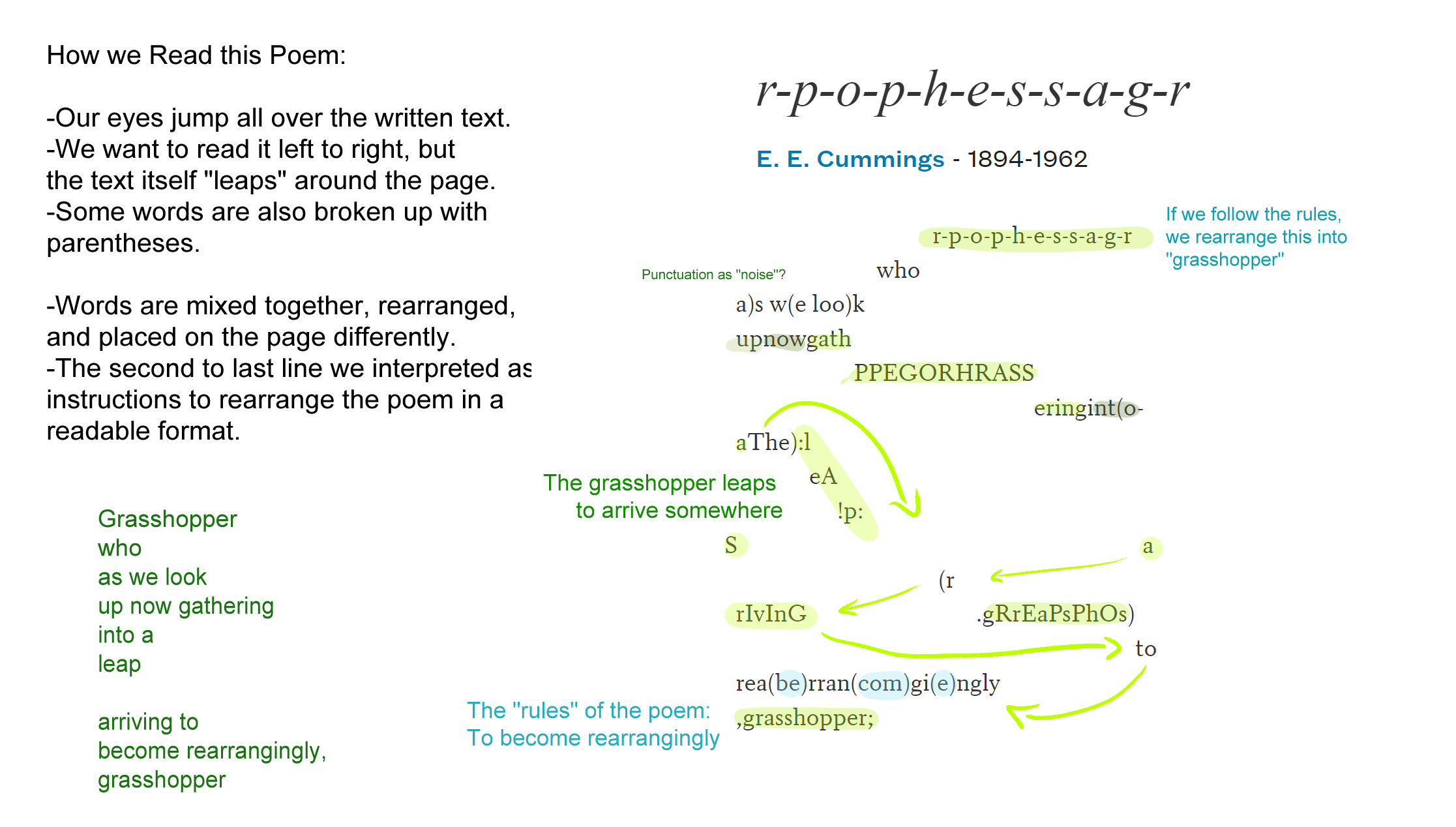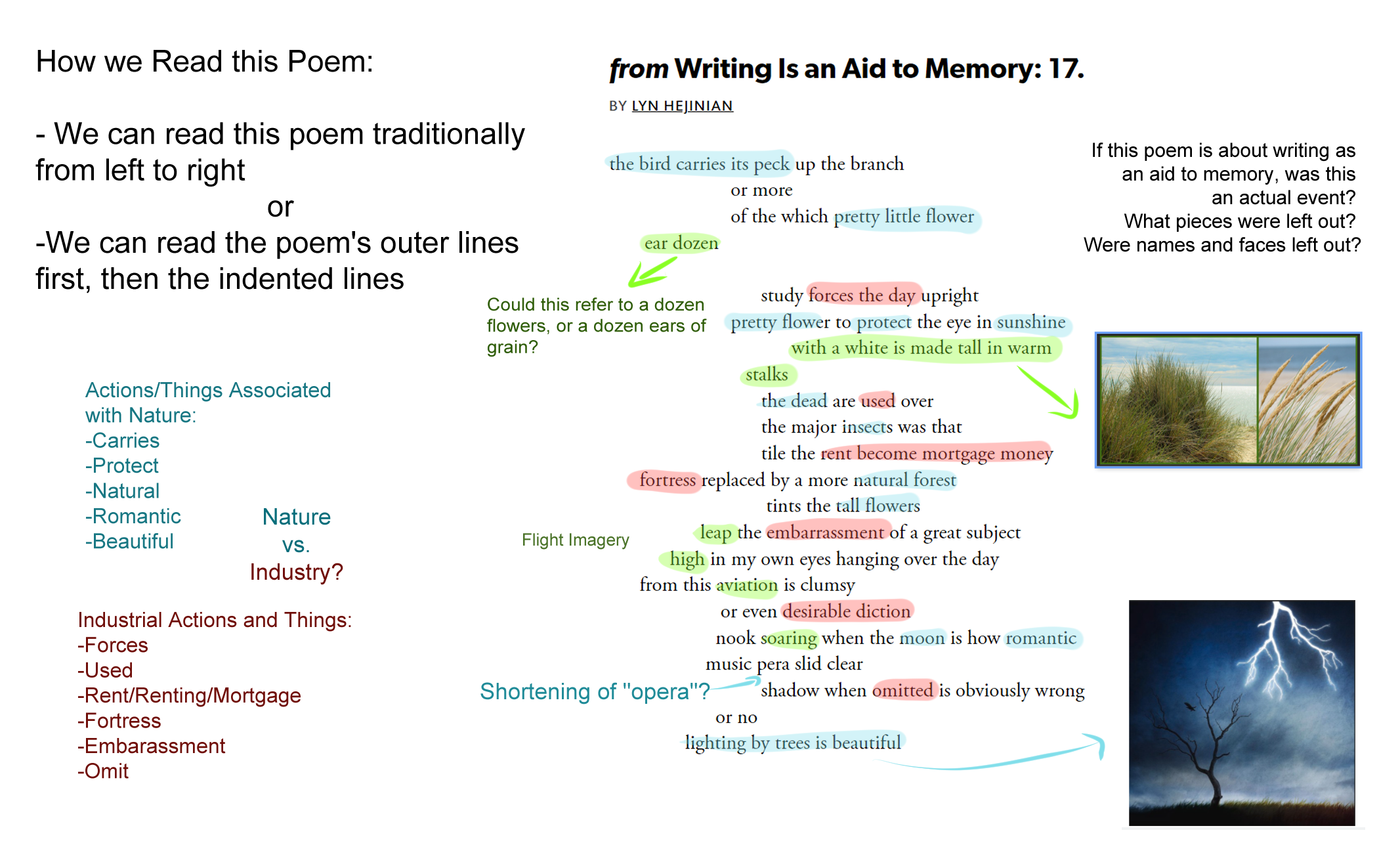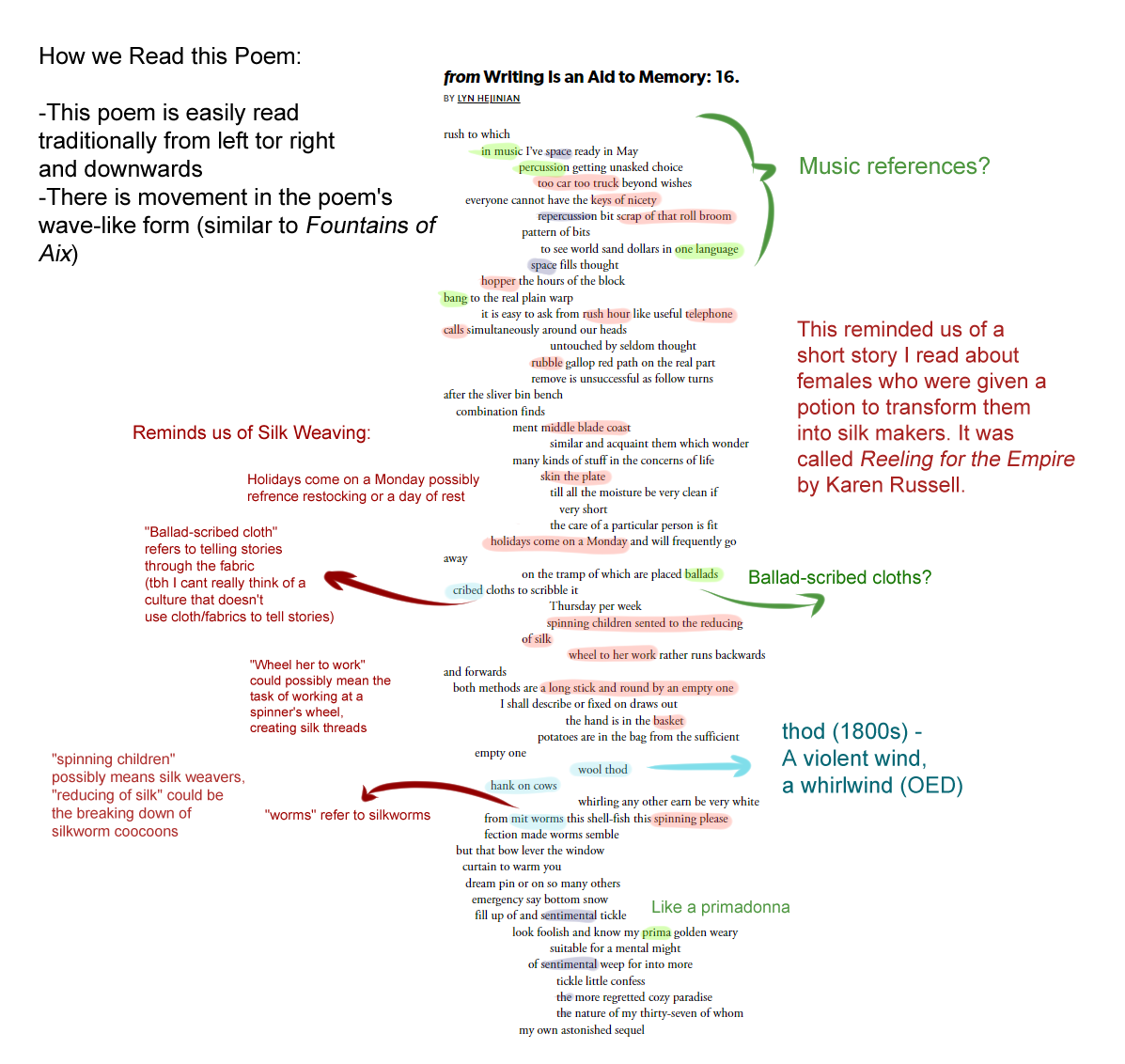Elizabeth Eschler, Becky Henrikson, Theo Meadows, Rowan Parker
Group Three: Viewing Poetry
Central Question: How do our eyes read this poem?
Fountains of Aix by Mary Swenson
“Fountains of Aix” by May Swenson is a poem formatted in a descending manner. We chose this poem because of one of our themes, visual formats. Combined with the language, which highlights the word “water” at the end of each line, the poem creates the effect of water cascading down a surface. Within the poem, there are words that are based around the water. In terms of the central question, “How do our eyes read this poem?” The visual layout does most of the heavy lifting.

r-p-o-p-h-e-s-s-a-g-r by E.E. Cummings
“r-p-o-p-h-e-s-s-a-g-r” (grasshopper) by E.E. Cummings is a poem formatted as if a grasshopper itself leaped all over the page. In terms of the central question, “How do our eyes read this poem?,” the visual layout is one of the reasons why we chose this poem, based on one of our themes, visual formats.

Writing Is an Aid to Memory: 17 by Lyn Hejinian
“Writing Is an Aid to Memory: 17” by Lyn Hejinianis a poem that, despite its confusing language, is not outwardly formatted in an especially unique manner, like the other poems. However, there is movement like the Fountains of Aix that might signify weaving silk in a way. Once again, the reason we chose this poem is the visual aspects.

Writing Is an Aid to Memory: 16 by Lyn Hejinian
“Writing Is an Aid to Memory: 16” by Lyn Hejinian, similar to “Writing Is an Aid to Memory: 17”, is not formatted in an especially unique manner. However, as we read this poem, we realize that we read the outer lines first, then the indented lines. While this is how we read, the words that make up the poem do not show why this may be.
